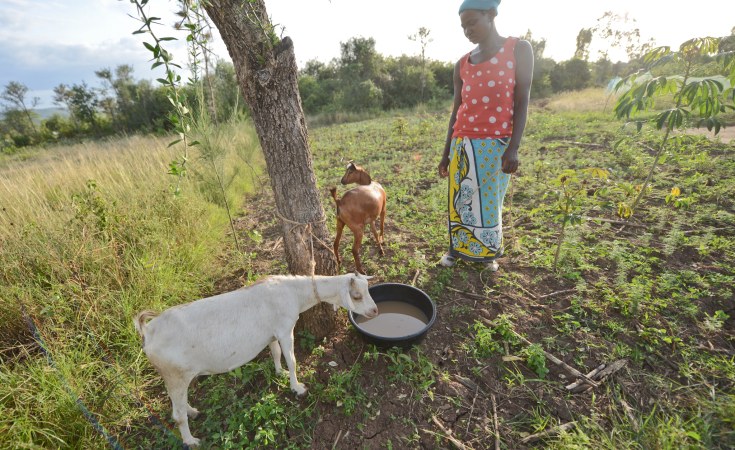It’s time for East Africans to prepare their palates.
Their maize, beans, sorghum, roots or tubers are about to become tastier, if not more difficult to prepare. Traditionally, they have undergone little more transformation than boiling before being served.
“We are demonstrating how various grain dishes can be used in international cuisines and culinary preparation, ranging from starters to desserts using staples grown in the region,” said Gerald Masila, executive director of the East African Grain Council (EAGC), a Kenya-based non-profit organization that promotes the exchange of information on matters affecting the grain industry in nine regional countries.
Promoting local, nutritious foods will become easier through the help of a new cookbook that the Grain Council launched last April in Nairobi. “The 82 Staple Food Cookbook” highlights different cooking methods and styles, ranging from baking, stewing and frying to steaming and roasting.
“The book will act as a culinary and nutrition guide that encourages consumers to adjust their dietary habits to promote better health at the household level,” said Masila.
Local staple foods contain live nutrients and complex carbohydrates, which have a low glyceamic index, or do not release sugars quickly, said Terry Wefwafwa, head of the Nutrition Department at Kenya’s Ministry of Health.
“Therefore, they have less risk to metabolic disorders, such as type two diabetes,” she said.
It is because of the nutrition factor that her ministry is consulting with EAGC and manufacturers of food products to promote dishes that contain these staple foods. One such company is Unga Group Ltd., widely known for its fortified maize meal and wheat flour products.
A report released on Wednesday by the Alliance for a Green Revolution in Africa (AGRA) stressed the importance of improving agricultural production on the continent, focusing on crops that make up most people's diets in Africa, including cassava, maize, millet, oats, potatoes, rice, sorghum, wheat and yams.
The study stressed a value chain approach to improving agriculture and nutrition. Making nutritious foods more palatable and marketable would make up part of a value chain.
Poor eating habits are becoming a major health concern in many countries, including developing ones that are steadily growing as middle-income nations. With that growth comes access to processed foods or fast foods that lack sufficient nutrition.
According to the Consultative Group on International Agricultural Research (CGIAR) Program on Climate Change, Agriculture and Food Security, obesity worldwide more than doubled between 1980 and 2008.
It says that more than 1.4 billion adults in 2008 were overweight, translating to one in every five adults worldwide. On the other hand only one in every 10 adults was overweight in 1980.
Although 65 percent of the world’s population lives in countries where overweight and obesity kills more people than factors related to underweight, CGIAR says, “many low- and middle-income countries are experiencing a rapid upsurge in non-communicable disease risk factors such as being overweight and obese, in urban settings.”
The need to have a full stomach has long been the overriding factor for eating in the region and in Africa as a whole, so a food’s taste or nutritional value mattered little.
But this is changing, said Wefwafwa.
The Ministry of Health has come up with a Kenyan food pyramid designed to encourage healthy food choices. The pyramid is contained in the National Guidelines for Healthy Diets and Lifestyle as a nutrition education tool.
“The pyramid provides guidance on consumption portions of local staples, including cereals, roots and tubers, not forgetting fruits and vegetables in addition to laying emphasis on moderation and diversity when consuming these foods,” Wefwafwa said.
Plans are now under way to display the pyramids in public restaurants and food outlets across the country.
The push for more palatable staple foods will, for example, see a dish of a mixture of maize and beans, popularly known as githeri, or the maize pudding (ugali) cease being the plain meals they are known to be.
And using staple foods in more interesting ways will help promote a structured trade in grains by stimulating demand for quality and nutritious grains, which will help improve livelihoods and food security in the region, said Masila.
“It will provide the much needed pull factor to stimulate demand for quality, safe and nutritious grains for the esteemed consumers,” he said.


